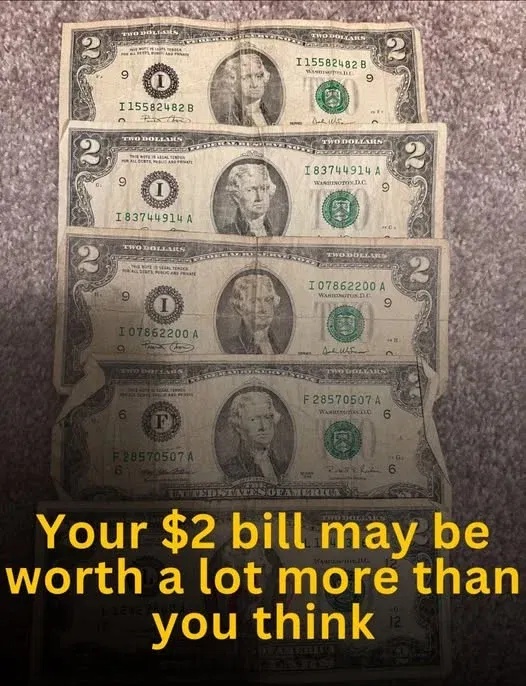
If you have a $2 bill tucked away in a drawer or tucked into an old wallet, it might be worth far more than its face value. Though rarely seen in day-to-day use, the $2 bill carries a rich history that stretches all the way back to the Civil War. First issued in 1862, it was introduced to ease a national coin shortage during wartime. Since then, the bill has seen several redesigns, featuring various historical figures and landmarks that reflect different chapters of America’s evolving story.
Despite its unique look and legacy, the $2 bill has long faced a complicated relationship with the public. Over the years, it was labeled as bad luck or linked with gambling, bribery, and political payouts. This superstitious stigma contributed to its limited use and smaller production numbers. But in the 1920s and 1930s, collectors began to see its charm, and interest grew—only to wane again by the 1950s when it was viewed more as a novelty than a viable piece of currency.
Today, the value of a $2 bill depends heavily on specific factors like its condition, print year, and any unusual features it may have. While most newer bills are still only worth $2, rare or older versions can fetch significant sums. For example, a 1953 red seal $2 bill marked with a star in the serial number can be valued at up to $500 by collectors. Uncirculated bills, printing errors, and special limited-run issues also tend to be highly prized in the numismatic world.
Although the U.S. Treasury still prints $2 bills, their scarcity in daily transactions has led many to mistakenly assume they’re no longer produced. This rarity adds to their appeal, making them a favorite among currency enthusiasts and casual collectors alike.
So the next time you come across one of these uncommon bills, don’t dismiss it as just another piece of change. Take a closer look—you might be holding a fascinating piece of American history, and perhaps even a hidden treasure.





